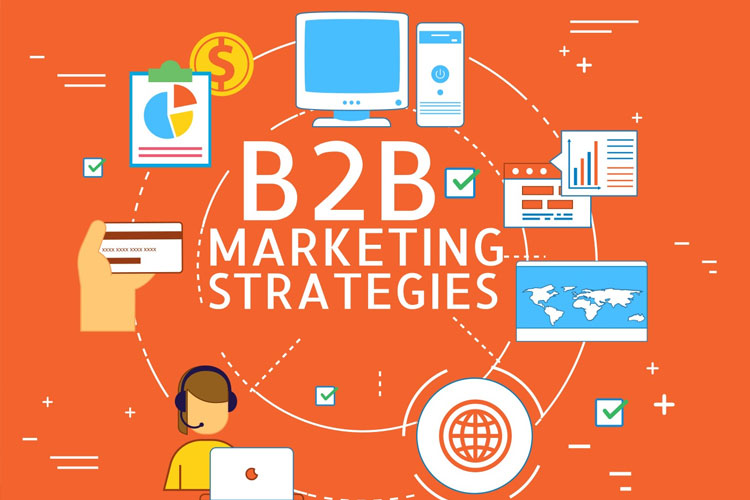Digital Marketing Strategies to Revv up B2B Sales Post Covid-19

TIMESINDONESIA, JAKARTA – Do you have a plan for the post Covid-19 business-to-business environment?
I’m sure you’ve considered jumping headlong into digital marketing and actualizing every strategy there is, if only to bring business back to pre-pandemic days.
Advertisement
But is that the way to go?
Do all digital strategies work the same? Will they all generate revenue?
The post-Covid era poses major challenges for marketing managers whose leadership and discernment are crucial in choosing particular strategies over others.
If you’re looking to revv up sales for your firm, here are some worth considering
1. Showcase Your Differentiator

Many of us think of differentiators or competitive edge as some grandiose strategy that a business undertakes to gain an extra edge. In the real sense, it’s the everyday things you and your team do to provide superior value to your customers.
So, articulating your differentiators and knowing how to use them ensures the entire organization distinctly knows what your company stands for. The team can then translate this into how they serve customers, boosting your brand’s viability and overall profitability.
Various differentiation strategies can define your brand, including:
● Product differentiation. This ranks highly in many customers’ minds and revolves around physical and perceived differences such as features, performance, and efficiency.
● Service differentiation. Here we are talking about more than product delivery. It also touches on product training, installation, easy ordering and checkout processes, seamless interactions, and after-sales. Train your team to offer consistent services to customers and prospects.
● Relationship differentiation. Customer-facing employees are the link between your products/service and the customer—if that link breaks down your business will suffer. Improve customer-centricity by demonstrating courtesy, competence, reliability, credibility, and responsiveness.
2. Invest in Data Analytics

From shortening sales cycles to reducing churn, identifying and prioritizing high-value customers, and making appropriate recommendations, sales data is increasingly useful in B2B marketing.
You, too, can harness analytics to build substantial value for your brand and customers.
● Focus on your business objectives first. It’s easy to get absorbed and bogged down by the shiny objects (analytic tools) and forget why you’re implementing sales analytics. Only after you’ve identified the challenges you face in securing new sales (with the tools you’re using at present) should you evaluate analytics tools.
● Help the team trust the data. It’s natural for sales reps to believe they know their customers much better than any analytics program. Help them overcome their skepticism by training them on how the program derives its insights. Show them how analytics can help them sell more, to help them improve their performance.
● Ease of use. Even the strongest insights are only as valuable as their ease of interpretation. Go for a tool that focuses on the sales rep experience. Think ease of access, delivering easily understandable information and offering actionable insights and recommendations.
3. LinkedIn Marketing

Business professionals the world over frequent the LinkedIn platform to connect with like-minded individuals, find business solutions, and catch up on industry developments.
And here’s the best part: four out of five of these professionals drive business decisions.
So, when you embark on LinkedIn Marketing, you are putting your brand and solutions in the face of those who call the shots.
Best practices include:
● Adding your customers (new and existing) to your network. That way, if the prospect you’re targeting is a mutual connection, you can always drop your customer a line asking for a referral. Further, if your contact moves to a new company, you’ll have an opportunity to re-engage and sell your solutions to their new organization.
● Publish content. From customer/industry expert interviews to new trends and product updates, publishing content allows you to share helpful insights to help businesses and prospective customers.
● Join relevant groups. Not to self-promote, but rather to help the community by sharing useful information, answering questions, and commenting on other members’ posts. You can also post content that indirectly promotes your products/services.
4. Cold Calling

Modern-day cold calling differs tremendously from the old telemarketing methods. Today, sales reps take on a more targeted approach. They identify customer needs and then focus on creating valuable and quantifiable messages.
How do you make targeted calls when dealing with companies you’ve never contacted in the past?
● Start with research. Your target company works within an industry and will probably experience the same troubles others do. What challenges do companies in that industry face? Can you solve them satisfactorily?
● Know your stuff. If you’re going to pitch convincingly, you’ll need to know your solution, the competition, and other factors affecting the solutions you offer. Your prospects are smart people who are probably familiar with your kind of offerings—they might choose to test your knowledge.
● Qualify your prospect. Use open-ended questions to gauge interest, decision-making capacity, and propensity to buy. You certainly don’t want to waste time pursuing people or prospects that aren’t serious contenders.
● Handle objections. It’s natural for people to have concerns about your offerings. It’s your job to help smoothen out these concerns and misunderstandings by providing accurate information.
5. Seek Referrals

Statistics have it that 20 to 50 percent of purchasing decisions are founded on word of mouth. Further, the customer lifetime value among referred customers stacks higher than non-referred customers by up to 16 percent.
So, if you want to get in front of responsive prospects and drive sales, referral marketing is the best way to go.
Here’s how:
● Identify potential advocates. Ideally, customers who receive the most value from your solutions make the best advocates. How well connected are they in their industry or with people whose business you’re targeting?
● Ensure your customers are happy first. Would your customers keep working with you beyond your initial contract? We recommend building personalized relationships with your customers and delivering beyond expectations.
● Ask. Hop on the phone or connect with customers on Zoom to ask for referrals. Alternatively, you can create a “request for referrals” email template. The content on this template can be altered depending on the response you receive from customers.
● Reciprocate. Are there people in your network who can benefit from working together? Go on and hook them up—they will appreciate the introduction and feel inspired to send some referrals your way.
**) Ikuti berita terbaru TIMES Indonesia di Google News klik link ini dan jangan lupa di follow.
| Editor | : Khodijah Siti |
| Publisher | : Rochmat Shobirin |

